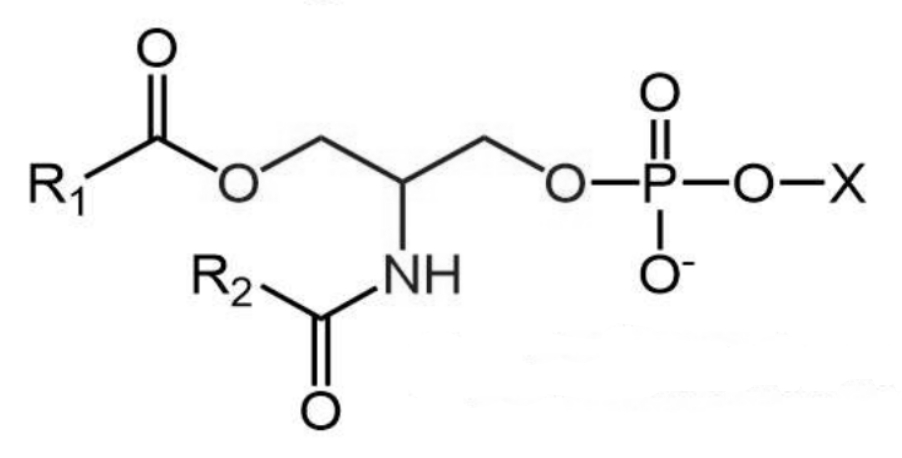
SERINOPHOSPHOLIPIDS
These phospholipids have been isolated from a thermophilic bacterium, Limisphaera ngatamarikiensis. NGM72.4T. They are distinct from the most abundant glycero- and sphingophospholipids by featuring a serinol backbone instead (Vyssotski M et al., J Nat Prod 2025, 88, 373), the presence of diacylserinol being detected 10 years earlier as novel analogous series of phospholipids in the same bacteria strain (Anders H et al., Int J Syst Evol Microbiol 2015, 65, 1114). This discovery demonstrates one new adaptation strategy of extremophiles challenging the current view on phospholipid diversity.
It was shown that the major serinophospholipids in these bacteria were N,O-diacylserinophospho-N-methylethanolamine and N,O-diacylserino-phosphoethanolamine. All these phospholipids constitute up to 38% of the phospholipid mass, the others being phosphatidylethanolamine, phosphatidylmonomethylethanolamine and cardiolipin. The fatty acid composition of these compounds was determined to include normal, iso and anteiso saturated fatty acids mainly with 15, 16, 17 and 18 carbons.
Furthermore, it was demonstrated that these specific phospholipids are further differentiated from the other bacterial or eukaryotic glycerophospholipids by their backbone configuration. In contrast to bacterial glycerophospholipids, which have an sn-glycerol-3-phosphate architecture, these newly serinophospholipids have an (S)-configured serinol core that is equivalent to the sn-glycerol-1-phosphate arrangement characteristic of Archaea. The presence of these original phospholipids in thermophilic bacteria suggests that they could play a role in cell wall stability as their importance increases when they are cultivated at increasing temperatures.
 Serinophospholipids
Serinophospholipids
X = ethanolamine or N-methylethanolamine
R1 and R2 = fatty acid chains
DISPERSIVE LIQUID-LIQUID MICROEXTRACTION
Lire la suiteDevenez membre et participez au développement de la Lipidomique au XXIème siècle.
S'inscrire